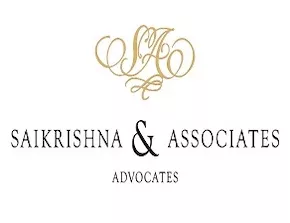On 28th March 2024, the Delhi High Court (DHC) pronounced its final judgment1 in the cross-suits filed between Ericsson and Lava, ultimately deciding the matter in favour of Ericsson by granting it damages to the tune of INR 244 Crores (USD 29.9 Million) along with legal costs. The redacted version of the decision was uploaded on 3.04.2024. However, the redactions are limited to the correspondence exchanged between the parties and the rates offered to unidentified third parties. Therefore, there is enough clarity in this 476-page judgment, to be able to appreciate the basis for the many findings rendered on numerous significant issues, which were frequently debated in Indian SEP cases. The present article is a high-level summation of the primary findings and important observations made in the judgment, a detailed analysis of which will soon follow on this page.
Brief Facts and Background of the Proceedings:
Ericsson had notified Lava on 1st November 2011 to take a license for its SEPs for 2G and 3G portfolio. After more than 3 years of the parties corresponding with each other, Lava preferred to file a Suit before District Court of Noida ("Noida Suit") for seeking declarations that Ericsson had waived its rights to enforce its claimed Indian SEPs, by not asserting the same against the chipset manufacturers, or against any manufacturers of mobile devices and tablets in China, and for seeking protection against Ericsson's groundless threats of litigation. Lava as alternative plea also sought a declaration of the Fair Reasonable and Non-Discriminatory (FRAND) terms for Ericsson's claimed SEPs.
Soon thereafter, Ericsson filed a Suit before DHC claiming infringement of 8 of its SEPs, and thereby seeking permanent injunction and consequential reliefs, along with a declaration that the rates offered by Ericsson for its SEP portfolio were FRAND in nature. Lava accordingly filed a Counter Claim, seeking revocation of Ericsson's 8 patents. In the meantime, vide order dated 31.07.2015, the Supreme Court, transferred the Noida Suit to DHC to be clubbed with the Ericsson's suit.
During the course of the proceedings, vide order dated 10.06.2016, DHC passed a conditional interim injunction against Lava, to deposit Rs. 50 Crores with the Court. This amount was thereafter reduced to Rs. 30 Crores in Appeal and the matter progressed to trial which commenced in February 2016 and concluded in July 2016. The final hearing before the Hon'ble Judge who had rendered the ultimate decision commenced on 8th February, 2023 and was concluded on 30th May, 2023 with parties submitting their written submissions by August, 2023.
- Validity: Out of the 8 suit patents, 7 were held to be valid by the Court. DHC also articulated a 7-step test "Seven Stambhas Approach" as guiding principles for assessing novelty and non-obviousness of a patent.
- Essentiality: While holding in favour of
Ericsson on the issue of essentiality, DHC rendered the following
important observations and findings:
- Declarations to ETSI: Court held that a delay in filing the declarations to the Standard Setting Organisation (SSO), is not a problem, since the real purpose of such declarations is not to establish essentiality of the patent in question, but to assure that the SEP holder it would license its SEPs on FRAND terms.
- Claim chart: Court observed that Claim mapping charts are a "key tool" in providing clarity on the essentiality of patents and that Lava had failed to give any rebuttal to Ericsson's claim charts. The Court further held that while Lava claimed that the Standard could be implemented through alternative methods which were different from the suit patents, it failed to demonstrate the same with cogent evidence.
- Infringement:
- Defense of Doctrine of Exhaustion was rejected: Lava argued that since it was procuring chipsets from third parties, who are licensees of Ericsson, no further license was required to be taken by Lava. Court rejected this argument since (i) Lava did not have any agreements with chipset suppliers who claimed to have a license with Ericsson, nor did they provide Lava with any indemnity, (ii) that Lava did not carry out any due diligence on whether the chipset manufacturers had any licenses with third parties, (iii) that the suit patents related to end-devices and not just the chipset, since the complete specification of the suit patents extend beyond the chipset, (iv) that the suit patents were not subject matter of the agreement between Qualcomm and Ericsson, which only pertained to CDMA applications, hence the said agreement did not come to the aid of Lava, and that (v) if Lava truly believed that the onus to pay royalty was on the chipset manufacturer, then Lava was free to avail legal remedies against such chipset suppliers.
- Test for infringement was established: DHC relied on the ruling laid down in Fujitsu Ltd. v. Netgear Inc1, which was approved by the DHC (DB) in the Intex v Ericsson2 case, wherein it was held that infringement in SEP cases would be adjudicated upon by way of a two-step test – (i) mapping patent claims to the standard, and (ii) mapping the impugned product to the standard. The Court observed that Lava, in its Noida suit, had admitted that its devices conform to international standard and that these international standards have been adopted by India. Court held that since compliance with standards is "unavoidable" due to India having recognised ETSI standards, it was untenable to suggest that Lava's devices did not conform to the asserted standards. Court also held that Ericsson's Test Reports placed on record established that Lava's devices complied with the optional portions of the ETSI standards, such as AMR and EDGE for 2G, while Lava failed to furnish any test reports to counter said Test Reports nor did it lead any evidence or expert analysis to prove that the conclusions drawn in Ericsson's Test Reports were incorrect or misleading.
- FRAND:
-
- Global outlook: DHC relied on two significant international decisions (i) Huawei Technologies Co. Ltd. v. ZTE Corp. & Anr3, and (ii) Unwired Planet International Ltd. v. Huawei Technologies Co. Ltd & Others,4 , holding that the principles for FRAND determination and negotiations laid down in the said decisions would be "equally applicable in the Indian context". That since "India has one of the largest telecom industries in the world, therefore, the global practises of the telecom industry that are judicially recognised would have bearing on the practises followed in the Indian telecom industry".
- Lava is guilty of holding out: Court held that a review of the pre-suit correspondence evidenced that that Lava never had any intention to enter into a FRAND licensing agreement with Ericsson as it employed delaying tactics, nor did it provide a counteroffer. Court observed that Lava never questioned the essentiality of the suit patents during the period of negotiations and repeatedly took time to revert with technical queries but failed to raise any. Court also observed that it "defies logic" that Lava negotiated with Ericsson for a period of 3 years, if it believed that Ericsson's patents are not essential. That Lava kept on raising objections and delaying the signing of the NDA for more than a year. Court further held that the "dishonesty of Lava is also evident from the fact that during negotiations, Lava kept on insisting that Ericsson provides its third-party license agreements to Lava". According to the Court such insistence was unjustified, due to the confidentiality of such third-party agreements. Court observed that even during the course of hearing the final arguments, Lava failed to confirm that it was willing to pay the same rates as what was being paid by Micromax, in terms of the orders previously passed by the Court. The Court therefore ultimately characterized Lava's conduct as that of an "unwilling licensee" and held that it was guilty of employing "hold-out strategy".
- Lava failed to establish hold-up and royalty stacking: DHC observed that Lava had failed to lead any evidence to prove royalty stacking and hold-up against Ericsson. Further, the Court held that there can be no question of royalty stacking, since Lava is not paying any royalty to any third party in respect of any SEPs being implemented in its devices and also since Lava failed to even give a counteroffer.
- Ericsson's Offer was FRAND: Ericsson placed 54 licenses on record, which upon review, Court held were comparable in nature as these agreements were made with entities similarly placed to Lava and were competing with Lava in the Indian mobile handset market. Court further held that the rates offered to Lava were consistent with those accepted by other similarly situated entities, and thus the rates offered by Ericsson would fall within the FRAND range. The Court also held that a FRAND rate cannot discriminate between licensees on the "basis of scale of operations or date of entry in the market".
- Comparable license approach was preferred over Top Down approach: Court observed that for assessing damages, comparable license approach would be the preferred method since this approach relies on FRAND rates negotiated between parties in similar circumstances, making it a reliable benchmark for determining royalties for a prospective licensee. With respect to top-down approach advocated by Lava, DHC observed that Lava had not provided requisite evidence/calculations to justify adopting a top-down approach. Additionally, since Lava has admitted to not having entered into any license agreements or paid any royalties in respect of the SEPs, Court held that the comparable licenses would be highly reliable for determining royalties.
- Quantum of Damages: Since the patents had expired and no injunction could have been granted, the Court computed the damages to be awarded in favour of Ericsson.
-
- Damages should be awarded on FRAND rate: DHC held that Ericsson is entitled to receive damages calculated based on the loss of royalty/license fees it would have received had Lava executed a FRAND license agreement at the commencement of its business operations.
- Damages should be granted for all devices not just the tested ones: DHC held that since Lava's impugned devices comply with ETSI standards as also the optional standards, and the position remains the same for all other Lava devices, damages ought to be paid for all devices and not only the tested devices.
- Basis for computation of damages would be the device and not the chipset: Lava had argued that royalty should be calculated on the value of the chipset and not on the basis of the entire device. However, DHC held that in light of "prevailing international jurisprudence" it was evident that the basis of calculation of royalty should be the end-product and not the chipset. Court further observed that in none of Ericsson's comparable agreements, the third parties were rendering royalties calculated on the value of chipset and instead were paying royalties based on the net selling price of the end-device. Court further observed that even in the SIPROLAB portfolio relied upon by Lava, royalties were being computed on the basis of the net selling price of the devices and not the chipset.
- Damages should be granted for the entire portfolio and not just the suit patents: Lava had argued that royalty should be payable only for the eight Suit Patents and not the portfolio of SEPs, however, DHC observed that in the Noida suit, Lava themselves had sought a license from Ericsson for "all its SEPs and not just the suit patents". Further pursuant to reviewing the evidence, the Court held that Lava's case for licensing individual patents from a portfolio is not workable as this could cause substantial administrative burdens, increased transaction costs, "legal complexities", uncertainties in technology implementation and inefficiencies for both the licensors and implementers. While, on the other hand licensing the entire portfolio under FRAND principles, ensures equitable and fair treatment of implementers. Thus, the Court held that "granting damages only for the asserted patents, rather than for the entire portfolio, would not only deviate from industry practises and FRAND principles but also potentially disrupt the balance and fairness in the licensing ecosystem." Court also held that since compliance with standard implies implementation of all SEPs, therefore it is necessary to take a license for all SEPs and accordingly the damages would also have to be assessed on the basis of the entire portfolio.
- SIPROLABS Licensing Program for WCDMA SEPs would not be relevant for computing FRAND rate: Court rejected Lava's reliance on SIPROLAB pool rates for 3G SEPs since (i) only two out of the eight patents in the suit related to the 3G/WCDMA standard, while the rest six patents related to the EDGE and AMR standards; (ii) Lava had not led any evidence to show that the two 3G suit patents related to the SIPROLAB portfolio; (iii) since Lava had not taken a license from SIPROLAB, which according to the Court raised doubts about the sudden reliance on SIPROLAB licensing rates and also contradicted Lava's arguments of computing damages on the basis of chipset and patent by patent and country by country, since SIPROLAB pool royalty rates were portfolio based and computed on the net selling price of the end device and it was held that (iv) Lava cannot seek "early adopter" rates specified in the SIPROLAB program, in light of the extensive negotiation period with Ericsson.
- Limitation period for damages: DHC held that, in light of Section 11A (7) along with first proviso read with Section 45 of the Patents Act, 1970, damages in a patent infringement suit can be claimed from the date of publication of the patent application as the rights of the patentee are activated from the said. DHC therefore held that the period of limitation as prescribed under the Limitation Act,1963 will not be applicable, on account of Patent Act being special law and thus, prevailing over general law. Court however, relied upon Section 111 of the Patents Act, 1970 to limit damages to the cut-off date of 1st November 2011, which was when Lava was first notified of Ericsson's claims.
- Calculation of damages and determination of FRAND rate: DHC observed that Ericsson's November 2015 offer to Lava for 2G and 3G technology, which was similar to what was offered to other similarly situated entities would be relevant for determining the FRAND rate. As the rate specified in the November 2015 offer was a range, the Court adopted the "upper end of the range" since Lava had not negotiated in good faith. However, because 1 out of 8 suit patents was revoked, the necessary deductions were made and two separate royalty rates for 2G and 3G devices were arrived at. But, since Lava had not filed separate data for 2G and 3G devices, the Court applied an average of the two rates and arrived at the final royalty rate of 1.05% of the net selling price of Lava devices. The period for which royalties are payable, is 1st November 2011 (when Ericsson first wrote to Lava) till 8th May 2020 (when the last suit patent expired) which amounts to INR 244,07,63,990 (USD 26.9 Million approx).
- Litigation costs awarded in favour of Ericsson: DHC held that Ericsson is entitled to recover actual costs of litigation since Lava did not negotiate in good faith and failed to settle the dispute, despite numerous opportunities during the course of proceedings, nor did it give any counteroffer.
- Final decree:
- DHC passed a decree in Ericsson's favour for the recovery of damages amounting to Rs. 244,07,63,990, along with interest @ 5% per annum from the date of this judgment until the full realization of the said amount. Further, DHC also held that Ericsson is entitled to recover actual costs, which will be determined by the Court basis bill of costs produced by Ericsson. Ericsson has also been directed to pay additional court fees on the differential amount awarded in favour of Ericsson within three weeks.
- DHC also issued directions to issue Certificate(s) of Validity of the Complete Specifications of the 7 Suit Patents found to be valid, to the Registry of the Court. Further, DHC has directed a copy of the judgement, to be sent to the office of the Controller of Patent for compliance of the action of revocation of IN 203034 which is held invalid.
To view original article link/click here
Footnotes
1 Telefonktiebolaget Lm Ericsson (Publ) Vs. Lava International Ltd CS(COMM) 1148/2016 NCN 2024:DHC: 2698
2 620 F.32 1321
3 2023 SCC Online Del 1845
4 CJEU case C-170/13 ECLI:EU:C:2015:477
5 [2020] UKSC 37
The content of this article is intended to provide a general guide to the subject matter. Specialist advice should be sought about your specific circumstances.



